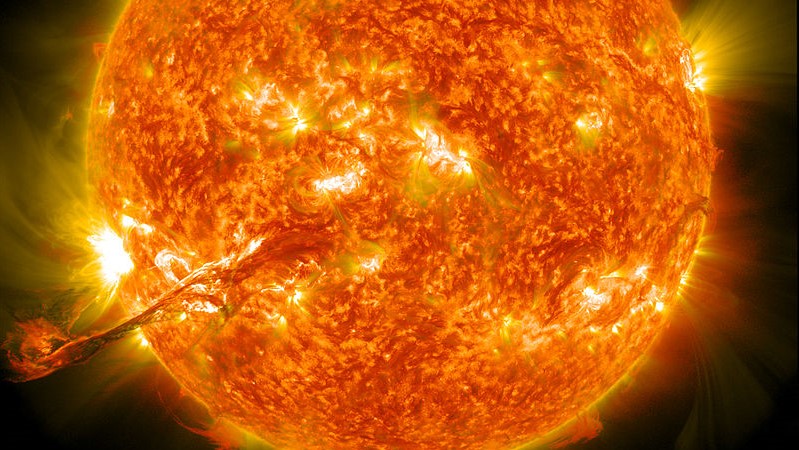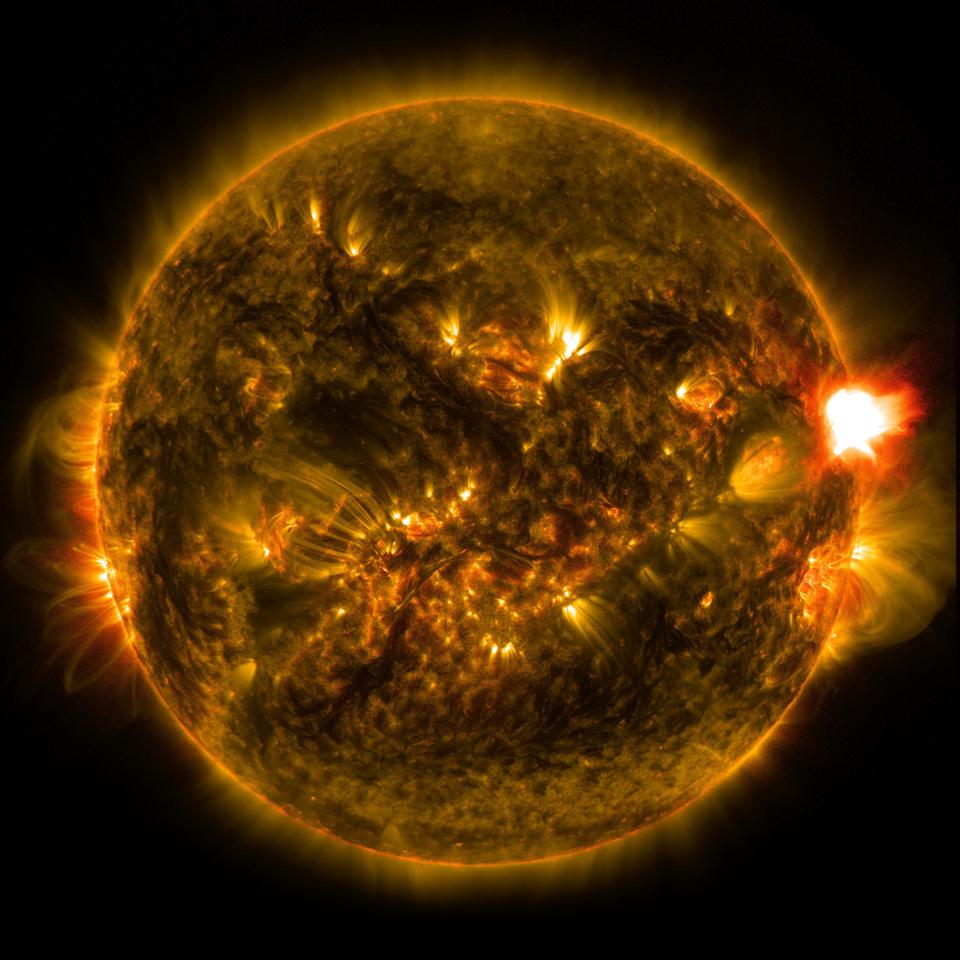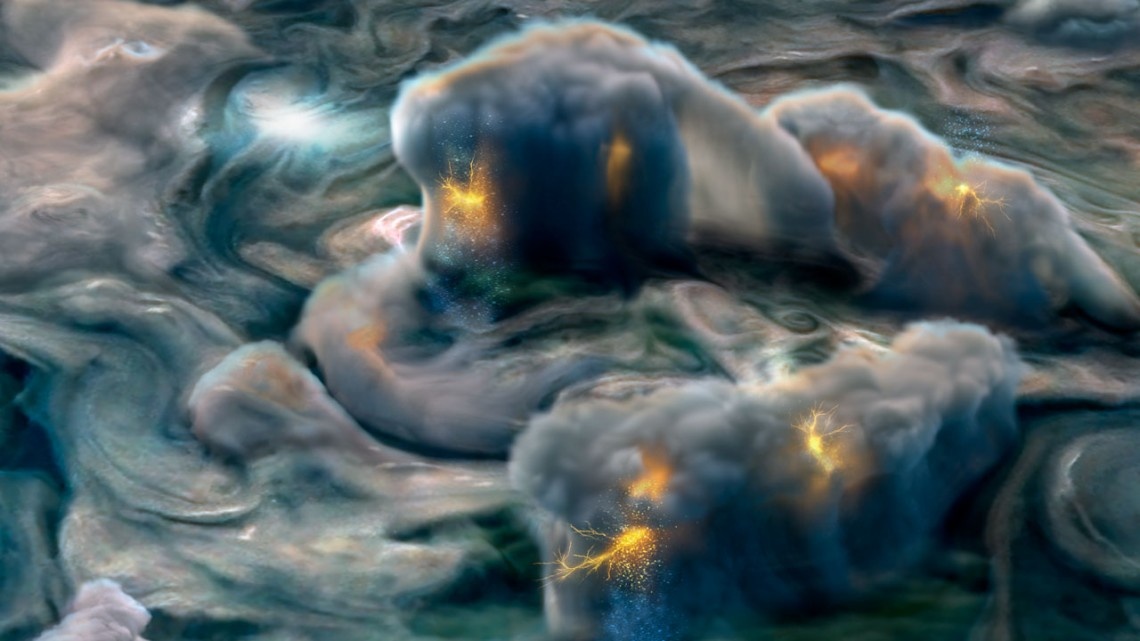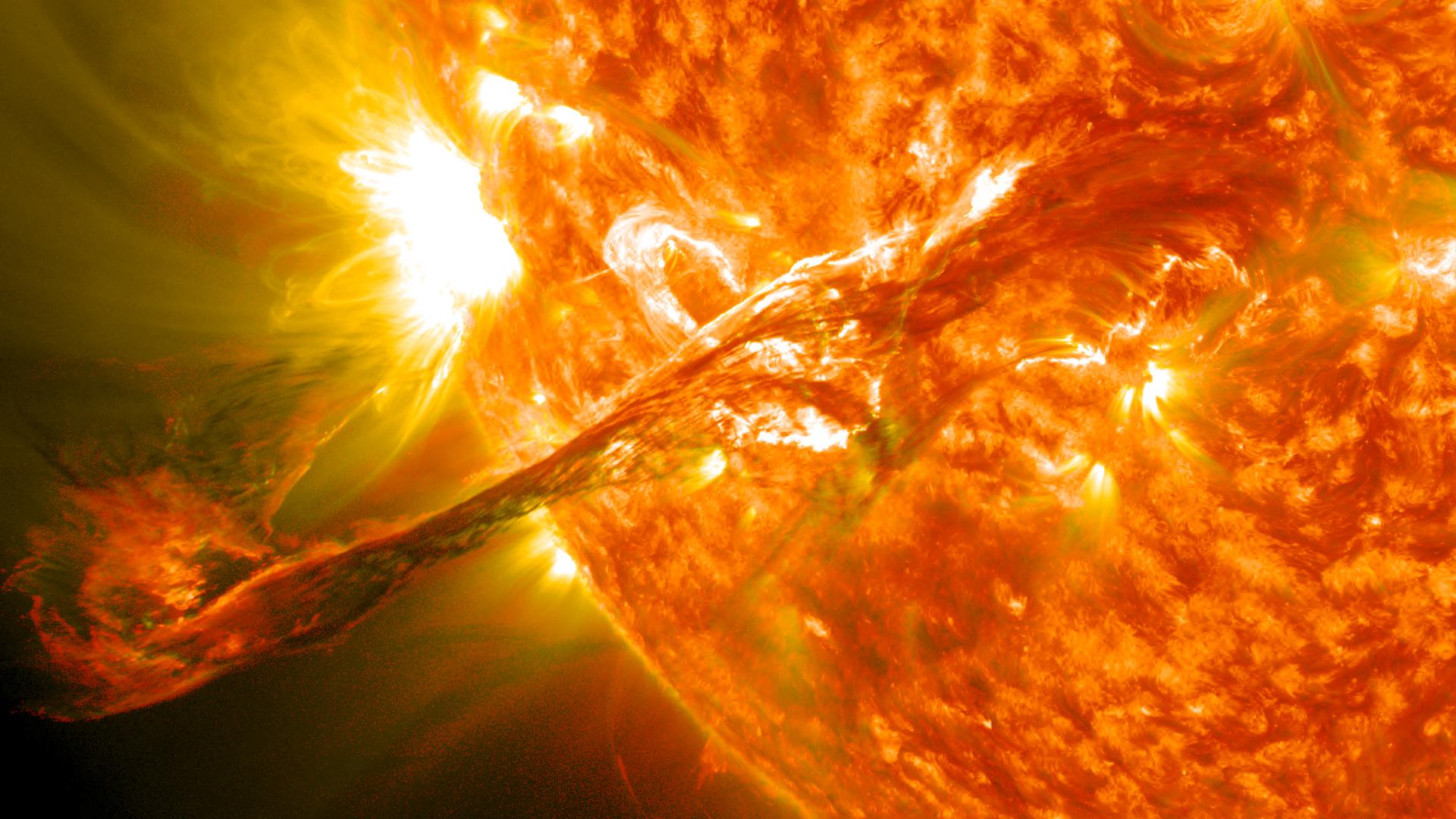The Sun has a new way to kill us
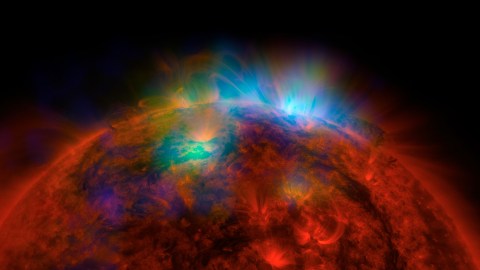
- The Sun has been waiting to kill us for a long time. In our high-tech era, it has a whole new tool it can use to strike us.
- When conditions are right, coronal mass ejections (CMEs), magnetic loops drenched in hot plasma, can be fired toward Earth. This has happened before, and we refer to them now as Carrington Events.
- If a Carrington Event happened today, most experts agree it would fry our power, GPS, and communication systems, leaving us cold, in the dark, and alone.
Our ancestors worshiped the Sun as a god, with good reason. As the fundamental source of light and warmth, it is also the fundamental source of life. These days we don’t give the Sun much thought except in relation to the weather, or maybe in our dreams of a beach vacation. But we should be careful about demoting the Sun to a lesser than godlike status. The fact is, that yellow ball up in the sky has been waiting for a chance to kill us for a long time, and recently it has found a whole new way to mess with us.
Everyone knows not to stare into the Sun because its light output is so strong it will fry your eyeballs, even from 149 million kilometers away. We also know that the shorter wavelengths of light from the Sun, those in the ultraviolet spectrum, can damage your skin tissue, leading to everything from sunburns to skin cancer. But these are not the dangers I want to discuss today. Nor will I talk about the fact that in some 5 billion years, the Sun will swell into a Red Giant, swallowing the Earth entirely — or at best, boiling off the oceans and leaving our planet a toasted cinder. Instead, today, I want to share with you the cosmic anxiety associated with the super solar flares called coronal mass ejections, or CMEs. If you rely on electricity for your daily life, then the Sun is waiting to use a CME to kill you.
Picture a flotilla of hyperfast aircraft carriers
The surface of the Sun is a violent roiling nightmare of superheated plasma, magnetic fields, and light so intense it would strip away your every atom. The magnetic fields are formed deep within the Sun, drawing their energy from the rotation of its ionized gases. These fields are highly volatile. They change form and character on timescales ranging from minutes to decades. While they are created deeper in the Sun, magnetic field lines emerge at the solar surface in vast arcs like breaching whales. Usually, the arcs will rise upward from the surface only to fall back down. But sometimes, when conditions are right, magnetic loops drenched in hot plasma will separate from the solar surface and get blown into space. This is a Coronal Mass Ejection, and when one gets fired toward our planet, it can cause big trouble.
A typical CME will drive a billion tons of plasma into space at energies equivalent to that of a flotilla of 200 aircraft carriers moving at 500 km per second. On any given day, the Sun may fire a few CMEs into space. Most are harmless to us. Occasionally, though, a CME will hit the Earth. When it does, it leads to what space scientists now call space weather.
Auroras come to harm us
Before we became a high-tech culture, the collision of a CME with Earth was no cause for alarm. Just the opposite, in fact, it might produce beautiful auroral displays. (Auroras are emissions of light caused by the flow of charged particles along Earth’s own magnetic field.)
But now that we rely so heavily on electricity, the massive flow of charged particles in a CME is no longer so harmless. CMEs can affect us in different ways. In the near-space environment of Earth’s orbit, the ionizing radiation from CMEs has the power to knock out satellites and space stations. These space storms are strong enough to be fatal to astronauts, which is why the space station has a special shielded compartment for them to hide in if a CME hits.
But the real problem for you and me is the electrical power grid. The magnetism in these space storms can load up power lines, causing outages. A particularly potent example of this effect occurred on March 13, 1989, when a severe space storm caused a system-wide failure in Quebec. The time from the onset of the storm hitting Earth to total blackout was 90 seconds, and 6 million people were left without power.
Coronal mass ejection: nightmare scenario
The nightmare scenario, then, is a super CME hitting the planet and overwhelming power grids across the continent. If something like this were to happen, experts warn that it could take months or longer to get power back. That long recovery time is because there is no large-scale set of back-ups for all the transformers that would need replacing. Imagine six months with no electricity across the entire country — it sounds pretty apocalyptic.
We do know that such super CMEs do occur. In fact, we may be overdue for one. On Sept 1, 1859, telegraphs around the planet — all connected by electrical lines — began spraying sparks as a huge CME crashed into the Earth. Scientists now call this a “Carrington Event,” after the astronomer who observed the CME that caused this global glitch. If a Carrington Event happened today, most experts agree it would fry our power, GPS, and communication systems, leaving us cold, in the dark, and alone. Luckily, we can prepare for something like this, and hopefully we will do so, before “the big one” hits.
But the lesson for today is simple. If you are tired of worrying about global warming, pandemics, or political instability, it is good to know that the Sun, our forgotten god, is still out there ready to smite us.
